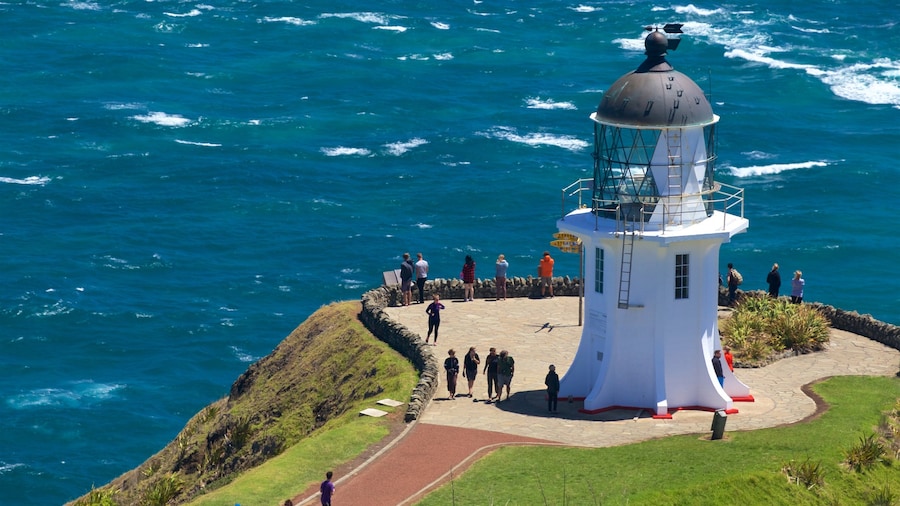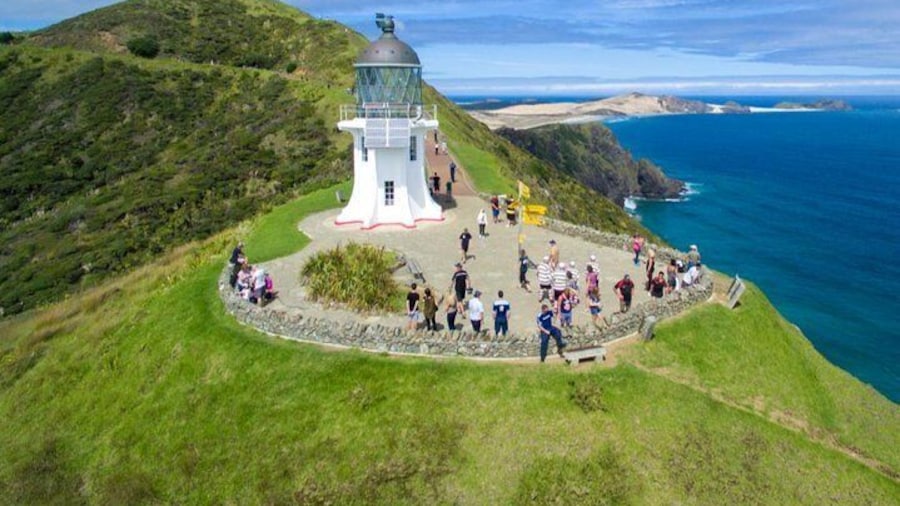Take a tour or drive all the way to the remote northwestern tip of the Aupōuri Peninsula, a spiritual place for Māori, to see two seas collide.
Come and explore the Aupōuri Peninsula at the tip of New Zealand’s North Island, from where the Māori spirits return to Polynesia. Foaming waters, pounding waves and lashing winds do little to diminish the peaceful nature of Cape Rēinga, but actually complement the Cape’s mystical image.
Cape Rēinga is popular with tourists because it’s very picturesque and because it’s about as far north as you can go in New Zealand. Cape Rēinga is not the most northern tip of mainland New Zealand though. That honor goes to the Surville Cliffs, a short distance away.
Walk around the Cape Rēinga LighthouseOpens in a new window on the Te Rerenga Wairua headland, which was first used in May 1941 and still had a lighthouse keeper on the lookout at the time. Today, the lights are automated and can be seen from up to 30 miles (49 kilometers) away.
The cape is also home to the twisted, gnarly pōhutukawa (Christmas tree), believed to be over 800 years old. “Rēinga” means underworld. According to Māori belief, the spirit of the deceased leaps from the headland onto this tree and slides down its roots into the sea to return to Hawaiki-A-Nui, the land of their ancestors. This makes Cape Rēinga the most spiritually significant place for Māori.
Watch as the Tasman Sea and the Pacific Ocean collide over the Columbia Bank just to the west. To Māori, these foaming whirlpools represent the creation of life, as one sea represents a woman and the other a man.
Cape Rēinga is 3.5 hours north of the heart of the Bay of Islands. Most coach tours take you along Ninety Mile Beach and also stop at the Puketi Forest for a walk to the kauri trees and Te Paki Sand Dunes for sand boarding. While convenient, it’s a long drive and leaves little opportunity to take in the tranquility of Cape Rēinga at your own pace. A better option is to stay overnight in Kaitaia, about an hour and a half to the south, to explore at your own pace. Stay for sunset or come early for sunrise and be rewarded with breathtaking views of the confluence of two oceans.















